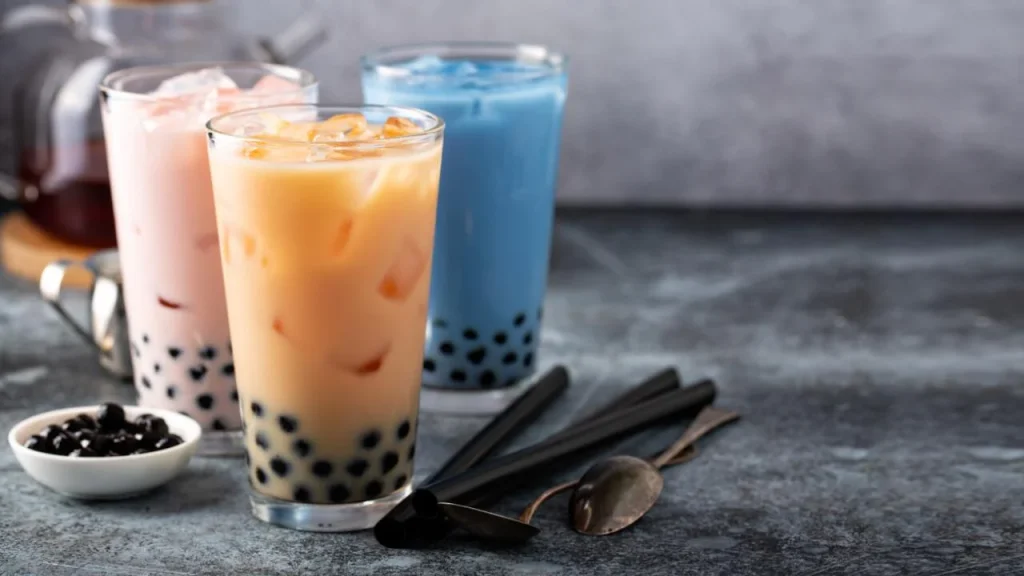Blog
The Environmental Impact of Bubble Tea: What You Should Know
Bubble tea, also known as boba tea, has become a global sensation, with millions of fans enjoying the sweet, chewy drink on a daily basis. From its vibrant flavors to its unique texture, bubble tea has become an essential part of many people’s lives. However, as with any popular trend, it’s important to consider the environmental impact that comes with this growing demand. In this article, we’ll explore the key aspects of bubble tea’s environmental footprint, the challenges it presents, and ways to enjoy your favorite drink while minimizing harm to the planet.
1. Plastic Waste from Disposable Cups and Straws
One of the most significant environmental concerns surrounding bubble tea is the waste generated from its packaging, especially single-use plastics. A typical bubble tea order comes in a plastic cup sealed with a plastic film lid or sometimes a plastic straw. These items contribute to the growing global plastic pollution problem, especially when not disposed of properly or recycled.

- Plastic Cups: Most bubble tea shops use plastic cups that are not always recyclable, contributing to landfill waste. Some cups are made from polystyrene or polypropylene, which take hundreds of years to decompose.
- Plastic Straws: Many bubble tea shops still use single-use plastic straws, which are non-biodegradable and often end up in oceans and waterways. Although some bubble tea shops are moving toward alternatives, such as paper straws or reusable silicone straws, plastic straws remain prevalent in many locations.
Pro Tip: To reduce your plastic footprint, bring your own reusable cup and straw when ordering bubble tea. Many shops are now offering discounts to customers who bring their own containers.
2. Tapioca Pearls and Sustainability
The iconic tapioca pearls that give bubble tea its name are made from cassava root, a crop that is widely cultivated. While cassava itself is a relatively low-impact crop, the process of turning it into tapioca pearls requires significant water, energy, and labor. Additionally, tapioca pearls are often flavored and sweetened using sugar, and many shops use a syrup made from high-fructose corn syrup or artificial sweeteners, which have their own environmental concerns.
- Water Consumption: The production of tapioca pearls requires large amounts of water for boiling and soaking the pearls, especially when they are made in large batches.
- Energy Use: The cooking process, which involves boiling tapioca pearls for hours, can contribute to carbon emissions, especially if the process is not energy-efficient.
- Packaging: After being made, tapioca pearls are often packaged in single-use plastic bags for transport to bubble tea shops, contributing to plastic waste.
Pro Tip: Look for bubble tea shops that use sustainable tapioca pearls made from organic cassava or those that offer alternatives such as popping boba made from fruit-based gels, which may have a smaller environmental footprint.
3. The Carbon Footprint of Ingredients
Bubble tea isn’t just about the tapioca pearls; it’s a combination of ingredients that includes tea, milk, syrups, and toppings. Each of these ingredients has its own environmental impact, depending on how and where it is sourced.
- Tea Production: Traditional tea cultivation, especially for black tea and green tea, can have a significant impact on the environment due to pesticides, fertilizers, and large-scale monoculture farming. However, there are sustainable tea farms that focus on organic farming practices and regenerative agriculture to minimize the environmental impact.
- Dairy and Non-Dairy Milks: The environmental impact of the milk used in bubble tea depends on whether it is cow’s milk or plant-based milk. Cow’s milk has a high carbon footprint due to methane emissions from cattle and the resources required for dairy farming, including land, water, and feed. Plant-based milks, such as almond, soy, or oat milk, typically have a smaller environmental impact, though some, like almond milk, are associated with high water usage.
- Flavors and Syrups: The sweeteners used in bubble tea, such as sugar, honey, and high-fructose corn syrup, can contribute to the drink’s carbon footprint, especially if the ingredients are not locally sourced. Sugar production, for example, often requires significant energy input and can lead to soil depletion and water pollution in regions that rely on large-scale sugarcane farming.
Pro Tip: Opt for bubble tea shops that use organic tea and plant-based milks to reduce your environmental impact. Look for sweeteners that are locally sourced or sustainable.
4. The Environmental Impact of Delivery and Takeout
In addition to the environmental costs of producing and packaging bubble tea, the delivery and takeout aspect of the industry can further increase its environmental footprint. With the rise of delivery apps and online ordering, many bubble tea shops are packaging drinks in additional layers of plastic or cardboard for transport, adding to the overall waste.
- Delivery Packaging: Many takeout orders require the use of plastic bags, foam insulation, and plastic utensils. This not only adds to waste but also increases the carbon footprint of each order due to the transportation emissions from delivery vehicles.
- Carbon Emissions: Delivery services, especially those relying on gas-powered vehicles, contribute to air pollution and carbon emissions. While bubble tea is delicious, the increased demand for convenience through delivery has a noticeable environmental toll.
Pro Tip: Consider visiting bubble tea shops in person instead of opting for delivery. If delivery is necessary, try to consolidate orders to reduce the environmental impact of multiple trips.
5. Sustainable Practices in the Bubble Tea Industry

Despite the environmental challenges, the bubble tea industry is gradually becoming more environmentally conscious. Many shops are adopting greener practices to help mitigate the environmental impact of their operations.
- Reusable Cups and Straws: More and more bubble tea shops are offering discounts for customers who bring their own reusable cups and straws, which helps reduce plastic waste. Some businesses have even switched to biodegradable or compostable cups and straws.
- Sustainable Ingredients: Some bubble tea vendors are opting for organic tea, locally-sourced milk alternatives, and ethically produced tapioca pearls to minimize their environmental footprint. There are also efforts to use plant-based syrups or create alternatives to the heavily processed syrups typically used in bubble tea.
- Plastic-Free Options: Certain bubble tea shops are introducing zero-waste or plastic-free options, offering packaging made from recycled materials, or even glass jars and stainless steel cups for takeout orders.
Pro Tip: Look for bubble tea shops that advertise their commitment to sustainability. Many will highlight their eco-friendly practices on their menu or website.
6. How You Can Make Your Bubble Tea Experience More Sustainable
As a consumer, there are several steps you can take to reduce the environmental impact of your bubble tea habit:
- Bring Your Own Cup and Straw: By using a reusable cup and straw, you can significantly reduce the amount of plastic waste generated by your bubble tea purchases.
- Support Eco-Friendly Shops: Choose bubble tea shops that prioritize sustainability by using compostable or recycled materials, and those that source ingredients responsibly.
- Avoid Excess Packaging: Whenever possible, opt for shops that use minimal packaging or offer more eco-friendly options for takeout and delivery.
- Choose Plant-Based Options: If you’re concerned about the environmental impact of dairy farming, choose plant-based milks like oat milk or almond milk. They generally have a smaller carbon footprint.
Conclusion: Making Your Bubble Tea Habit More Sustainable
While bubble tea is undoubtedly a fun and delicious treat, it’s essential to recognize the environmental impact that comes with it. From plastic waste to energy-intensive production processes, there are many factors contributing to the ecological footprint of this popular beverage. However, with a little thought and action, it’s possible to enjoy bubble tea in a more sustainable way.
By choosing eco-friendly shops, reducing waste with reusable cups and straws, and supporting more sustainable ingredients, we can all make a difference in minimizing the environmental footprint of this beloved drink. The next time you’re sipping your favorite bubble tea, remember that small changes can add up to make a big impact on the planet.


